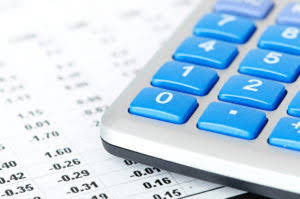Balance Statement vs Income Sheet: Differences & Purpose

An income statement does not include anything to do with cash flow, cash or non-cash sales. The difference between a balance sheet and an income statement is the information they show and the period of time they cover. Read alone, the income statement doesn’t give the full picture of a business’s health.
- While all financial reporting tools are used to determine where the company stands from a financial perspective, there are distinct contrasts in what they are used for.
- Intangible assets, things of value that you can’t touch or feel, are included here, too.
- On the other hand, the current ratio shows the company’s ability to pay off its debts within a year.
- Shareholder’s equity also includes retained earnings ― the portion of the net income that hasn’t been distributed to shareholders as dividends ― to be used for funding further growth and expansion of the business.
- Investors and creditors analyze the balance sheet to check the business’s overall financial health.
- For some companies, it can be monthly, for some quarterly, and others annually.
- Here is a quick reference for the key differences between the balance sheet and income statement, summarizing what we’ve discussed above.
A company’s assets must be equal to (or “balance” out) its liabilities plus equity. Yes, these statements are critical when seeking financing, as lenders and investors want to assess the company’s financial stability and profitability before making commitments. While an argument could be made for either, the income statement is often the most significant financial statement for startups and SMEs because it analyzes the ability to make a profit. Periodically prepared balance sheets are the primary financial tool for assessing the relative wealth or financial condition at a given point in time. Learn what to monitor and track to ensure your business is growing.
What is an Income Statement?
Income statements break down individual expenses and highlight the profit margin. A company’s profit margin represents the percentage of revenue they keep after accounting for all expenses. Each balance sheet has a list of assets on the list and a list of liabilities on the right.
For example, balance sheets detail what the company owns and owes to see how effectively debt is used to leverage success. Sometimes year-end planning to reduce taxes may be in conflict withyear-end planning to improve financial statements. This is becausehigher income looks good on your financial statements, what goes on balance sheet vs income statement but can cause youto pay more income tax. In such a case, you may have to choose betweenpaying higher taxes to make your company’s financial statements lookbetter, or foregoing improved statements to reduce taxes. Depending onthe business and its needs, lower tax payments are not always your bestchoice.
Long-term Liabilities
The two crucial financial statements you will rely on as a small business owner are your balance sheet and your income statement. As far as financial reporting is concerned, both the balance sheet and the income statement help explain the company’s financial standing. Understanding the relationship between an income statement and a balance sheet will put your company in a far stronger position. It should also be noted that the income statement has to come before the balance sheet.
- The income statement details your total revenues and expenses over a longer period to show you how the company is performing overall.
- These adjustments facilitate a useful evaluation of our current operating performance and comparison to our past operating performance and provide investors with additional means to evaluate cost and expense trends.
- They use the income statement to check if the company is making enough profit to meet up its financial obligations (pay its liabilities).
- These and other similarities keep them reliant on each other and make them both essential in providing a clear and complete picture of accounts.
- One side shows the company’s short- and long-term assets and the other side shows its liabilities and equities for a specific point in time.
The income statement doesn’t explicitly reference a company’s debt. Revenue might appear strong, but if the business has a looming debt payment and little cash, you might reconsider its health. You’re looking at a multi-step income statement when you see gross profit, which is the difference between sales and cost of goods sold. It includes revenues, expenses and gains and losses realized from the sale or disposal of assets. The income statement provides an overview of the financial performance of the company over a given period.
Accounting Tricks
Also known as a profit and loss (P&L) statement, an income statement summarizes a company’s financial performance over a specific period of time. It displays revenues, the cost of goods sold, and the net profit attributable to shareholders. A balance sheet looks at assets, liabilities and shareholder’s equity as measured at a point in time.
These key statements are required by the Financial Industry Regulatory Authority (FINRA), the Securities and Exchange Commission (SEC), tax authorities, regulators, potential investors, and competitors. Actual results may differ materially from Intel’s business outlook as a result of, among other things, the factors described under “Forward-Looking Statements” below. The gross margin and EPS outlook are based on the mid-point of the revenue range. These three core statements are intricately linked to each other and this guide will explain how they all fit together. By following the steps below, you’ll be able to connect the three statements on your own. By using all three of a company’s financial statement, you can get a clear picture of how well a company is performing and derive useful metrics to use when analyzing a stock.

Responses